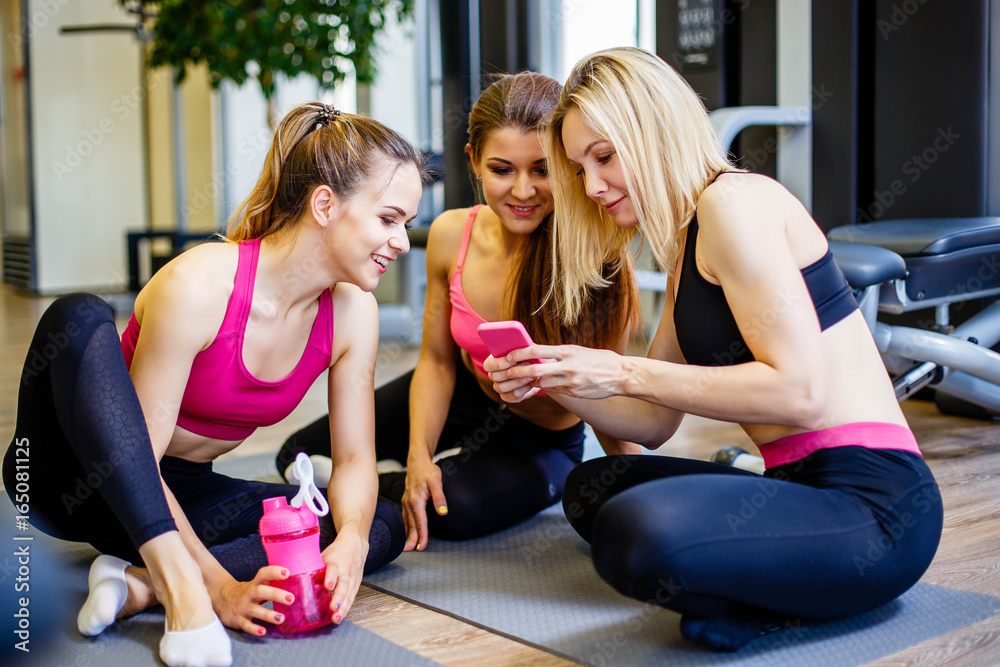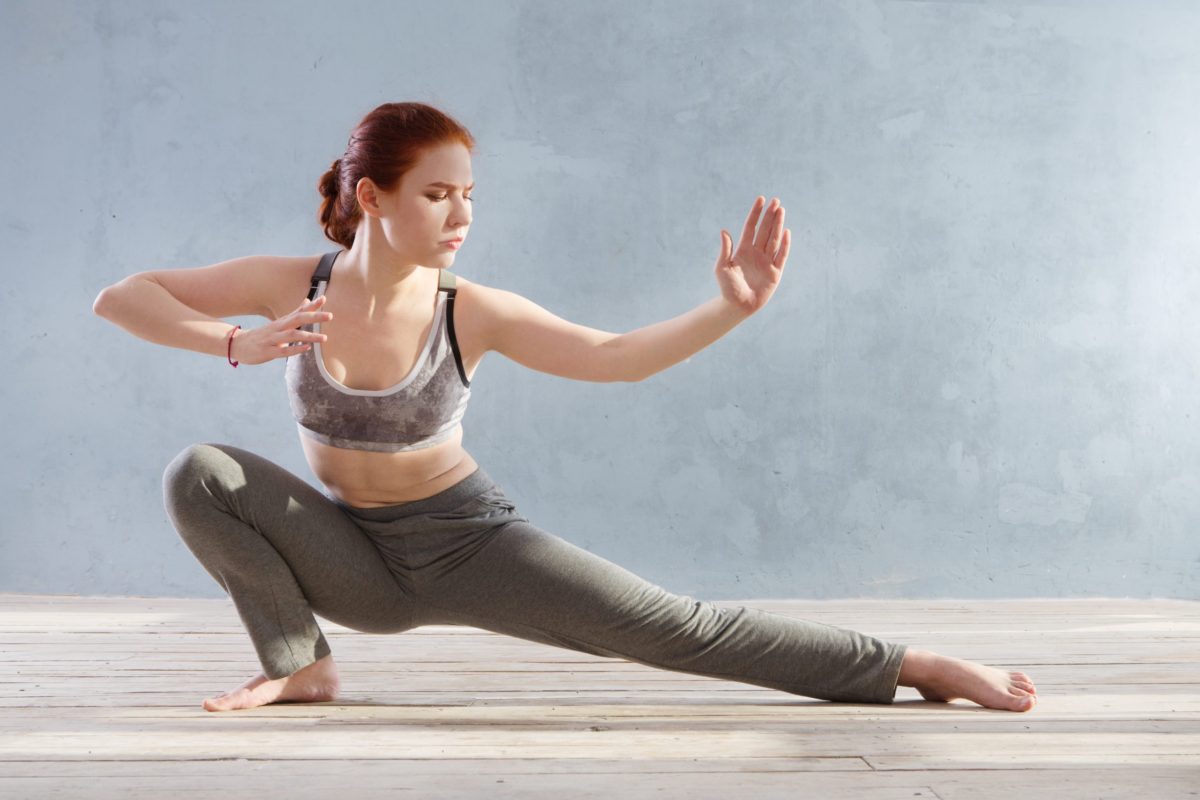Tai chi is often described as “meditation on wheels.” A study published in the Annals of Internal Medicine in June 2021 found that those with central obesity, (weight disproportionately concentrated in their midsection), who practiced the tai-chi form for 12 weeks reduced their belly as effectively as those who did aerobic exercise or strength training during the same time period.
Ten Tai Chi Moves to Practice
Are you ready to begin practicing Tai Chi to lose weight? These 10 Tai Chi movements will help you achieve your weight-loss and belly-fat related goals.
Tai chi walking
Start with your hands clasped either in front of or behind you.
Then, shift weight back to the rear foot. Turn your front leg slightly outward at an angle to form a “T” with your rear.
Turn the torso towards the foot that is turned out while shifting weight forward. Set up your next bow stance by bringing your rear foot forward.
By the end of weight shifting, turn your torso so that it is square with the bow position. Repeat the sequence to the opposite side.
Use this technique to walk for 20-30 minutes outdoors.
Concentrate on smooth weight shifting without wobbling. This is especially important when you are turning your torso while shifting forward to the foot that’s turned out. Most beginners find this difficult. Try to keep the center of mass level.
Start with your feet parallel, just below your hips and your arms at your sides.
As you lift your arms to shoulder level, inhale as you step to the left. Relax your wrists. As you lower your arms, exhale and step down your foot. Now, your wrists should be flexed. Relax your posture.
Wild Horse Parting Mane
Imagine holding a tai-chi ball as you move forward, and then part your arms. Place your hands on the hips as you stand with your feet parallel and hip width apart.
Straighten your leg by lifting it to 90 degrees. Hold for two seconds, then bend the knee and return the foot to the ground. Repeat the motion on the other side. For a total 2 minutes, alternate the movements.
Continue holding the tai-chi ball while shifting forward to the front turned out foot. You will be able to part your arms for the next bow position. Repeat this at least 10 times.
For better performance, try to move your weight, turn your torso and separate the arms in an effortless motion. Feel the legs pushing forward the pelvis, the spine rotating your shoulders and the arms being propelled, even if in slow motion.
Brush knee
Lift your right hand up to the height of your head and place your hand on your elbow.
While shifting weight to the left foot and entering the bow stance you should push your right hand forward as if you were throwing a pie. At the same time, brush your left palm toward your left knee. Draw your right hand towards your chest, as if you were deflecting an enemy’s punch.
While you are shifting your weight to the left turned out foot, raise your left hand toward your head while your right hand is near your left elbow. Bring your right foot forward to prepare for the same movements on the opposite side. Repeat the same motions at least 10 times each.
Then, try to move the weight, turn the torso and push/brush in a fluid manner. Feel the legs pushing forward the pelvis, the spine turning the shoulders and the arm movement being driven by shoulders.
Leg kick
Place your hands on the hips while standing with your feet parallel and hip width apart. Raise your left leg 90 degrees and then straighten it.
Hold for two seconds, then bend the knee and return the foot to the ground. Repeat the motion on the other side. For a total 2 minutes, alternate the movements.
By concentrating on Leg Kicks, you will gain the core strength needed to maintain your leg at 90°. The contraction of large muscles in the legs increases your heart rate and flexibility.
Sumo squats
Stand with toes slightly turned outward, feet wider than shoulder width apart.
Keep your knees and chest out while squatting down. Hold the squat position for 5-10 second. Stand back up and return to your starting position.
Perform 10 sumo squats. Hold each squat between 5-10 seconds.
This exercise helps you to improve your hip flexibility, strengthen your legs and core and get into lower squat positions.
Cloud hands
This movement involves the left and right arm moving continuously in circular motions while the feet move sideways, in a crab pattern. One foot steps out and the other foot steps in. The left arm makes circles in a counterclockwise direction, while the right hand draws circles in a clockwise direction.
The torso will turn slightly to the left or right in coordination with the side-stepping.
Take 10 steps left and 10 to the right.
Draw circles continuously, maintaining a constant speed. You should notice that as you become more experienced with this movement, the underhand hand will be pushing/stabbing while the overhand is pulling. This action engages the posterior chain of one side while engaging the anterior chain of the opposite side.
Instep kick
Start with your right foot behind you. Raise your right arm up to eye-level and turn out the right leg 45 degrees. Your weight should be shifted to your left foot. Draw the right leg upwards for the kick, bringing it to hip height or 90 degrees.
Kick out the right hand by extending the right leg.
Step your left foot down to start practicing left kicks. Return your right leg to its starting position and continue practicing right kicks.
Do 10 reps on each side.
Standing plie
Standing still in the horse’s stance is important. The mind cycles over all the body parts that are relevant: feet as gentle suction cup, knees pushing outwards, hip joints opening, lower back straightened and verticalized by tilting pelvis forward (tailbone facing forward), shoulders relaxed. Scapula separated. Hands held in front of belly with palms pressing down. Crown point gently pulling up, lengthening entire spine.
Continue this mental cycle. Each time correct your posture by relaxing the muscles that were tense and activating them as necessary. Take deep, long breaths.
Hold for two minutes, three times. Gradually increase the time you hold for as your muscle strength increases. After more practice, you can do two 10 minute repetitions and then 30 minutes at once.
You may feel a burning in your quads if you are a beginner. Relax your quads to eliminate the burning sensation. Other muscles (glutes and abs) will take up the slack. Beginners tend to let the lower back curve. Correct this by using the mental cycle, until it becomes second nature. Even though you don’t move, you still activate muscles and burn calories.
Cossack squat
Stand with feet slightly wider than your shoulders apart. Your toes should be turned outward. Your weight should be shifted to the left foot. While performing this movement, the right leg should be straightened out. You will feel a lot of stretch if you are a beginner.
Squat and lower your hips to the left heel. As you return to standing, press your left foot into your floor. Engage your core and keep your chest and back upright.
Continue to work on one side or switch from left to the right. Do five sets of ten repetitions for each leg.
Note: When an exercise changes levels (e.g. going up and down), it burns 3x as many calories as an exercise performed on the same level.







